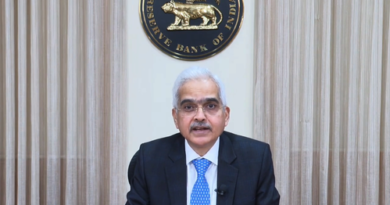80% of glaucoma cases go undetected in India: Experts
New Delhi, Jan 31: A whopping 80 per cent cases of glaucoma — the third most common cause of blindness — goes undetected in India, said experts here on Wednesday.
Glaucoma is a disease that affects the optic nerve. January is national glaucoma awareness month, a time to spread awareness about the disease.
Glaucoma is also known as the “sneak thief of sigh”, because there are no early symptoms. It is also the leading cause of irreversible blindness, affecting more than 80 million people worldwide.
“Glaucoma is a group of eye conditions that damage the optic nerve, leading to progressive vision loss. It typically presents with no symptoms in its early stages, making regular eye examinations crucial for early detection,” Ikeda Lal, Senior Cornea, Cataract and Refractory Surgery Specialist, at Delhi Eye Centre and Sir Ganga Ram Hospital, New Delhi told IANS.
Lal explained that as the condition progresses, one may experience blurred vision, difficulty adjusting to low light, reduced peripheral (side) vision, and seeing halos around lights. Few patients may even experience eye pain and headache.
“If you notice any of these symptoms, it’s important to see an eye doctor for a comprehensive eye exam,” the doctor said.
Approximately, 11.2 million people aged 40 years and older have glaucoma in India but only 20 per cent of them know they have it. It is because the disease initially has no symptoms.
Although glaucoma primarily affects the middle-aged and the elderly, it can affect people of all ages, according to experts.
“Vision loss in glaucoma is caused by damage to the optic nerve which is responsible for carrying images from the eye to the brain. Vision loss or impairment may be associated with reduced quality of life and decreased ability to perform activities of daily living, including loss of independence, restricted mobility, depression, and anxiety,” Rohit Saxena, R P Centre for Ophthalmic Sciences, AIIMS, New Delhi, told BILKULONLINE.
He further added that glaucoma becomes more common with advancing age. Family history and genetics play a role, with individuals having relatives affected by glaucoma being at a higher risk.
Other factors contributing to glaucoma include elevated eye pressure, certain medical conditions like diabetes, hypertension and prolonged use of steroids, especially without regular monitoring.
While there is no absolute cure for glaucoma, early detection, and treatment is of great importance and this helps in preventing further vision loss.
“Treatment options may include eye drops to lower intraocular pressure, oral medications, laser therapy, or in severe cases, surgery. With early detection and adherence to treatment, sight can be saved from glaucoma and these patients can have a very good vision for their entire life. Therefore, there is no need to be scared of this disease,” Lal noted.
Adults older than 40 years, especially those with a family history of glaucoma, must get a comprehensive eye exam every year, including an examination of the retina and the optic nerve. If and when it is identified, people will need long-term monitoring and management, the doctors said.



